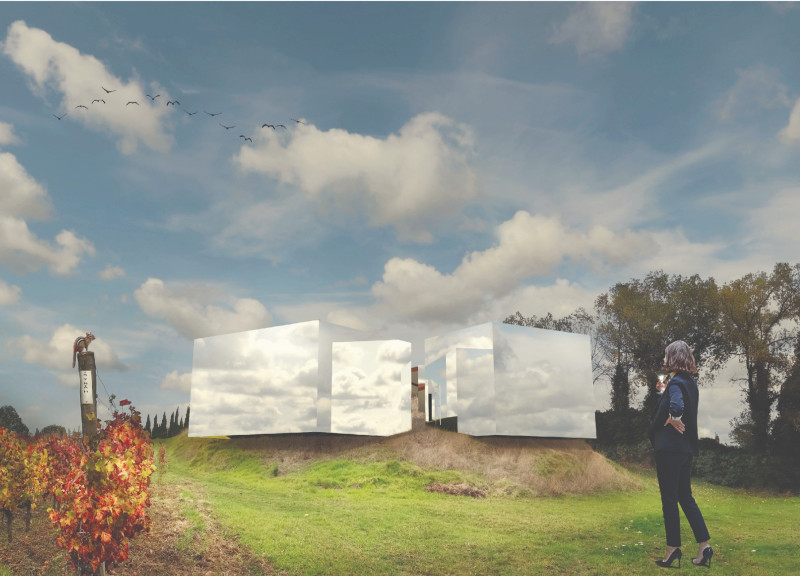5 key facts about this project
Through the Looking Glass is an architectural design that delves into the relationship between indoor and outdoor spaces, set in the backdrop of a scenic vineyard. The design features a series of cube-like volumes that are covered in mirrored glass, effectively reflecting the surrounding landscape. This approach helps to lessen the visual footprint of the structure, allowing it to blend into its natural surroundings. Each space is specifically crafted to enhance the experience of wine tasting, creating distinct atmospheres that invite visitors to engage with both the sensory and temporal aspects of the activity.
Room of the Past
The Room of the Past draws inspiration from Baroque architecture, showcasing a formal layout characterized by symmetry. This space enhances the traditional experience of wine tasting. Inside, furniture designed to resemble liquid form is complemented by glass wall decor, which distorts the vineyard views subtly. This design choice encourages guests to reflect on historical practices associated with wine enjoyment, fostering a sense of connection to a different time.
Room of the Present
Conversely, the Room of the Present offers a relaxed and informal atmosphere for social interaction. Here, the connection between interior and exterior is blurred through the use of window treatments and curtain-like elements. These features allow the landscape to influence the space's overall feel. The furniture celebrates imperfections, highlighting the beauty found in wear and tear over time. Additionally, a wine vending machine adds a modern touch, giving guests the opportunity to customize their wine choices, creating an engaging and personal tasting experience.
Room of the Future
The Room of the Future presents a contemplative environment that merges technology with natural elements. In this space, futuristic machinery contrasts with organic details like glowing weeds. This design implies the idea that natural phenomena can be replicated through technology. The room emphasizes the complexity of wine aging, framing it as a chemical process that can be refined to meet individual preferences, enhancing the overall enjoyment of tasting.
Timeless Elements
The project includes a cylindrical wine shelf featuring an integrated spiral staircase, which keeps the storage functional yet visually understated. The bathroom follows a similar principle, prioritizing utility over decoration. This design approach reinforces the themes of openness and the changing nature of time related to wine tasting. Thoughtful details throughout the space encourage visitors to take their time, creating a rich sensory experience that lingers beyond their visit.






















































